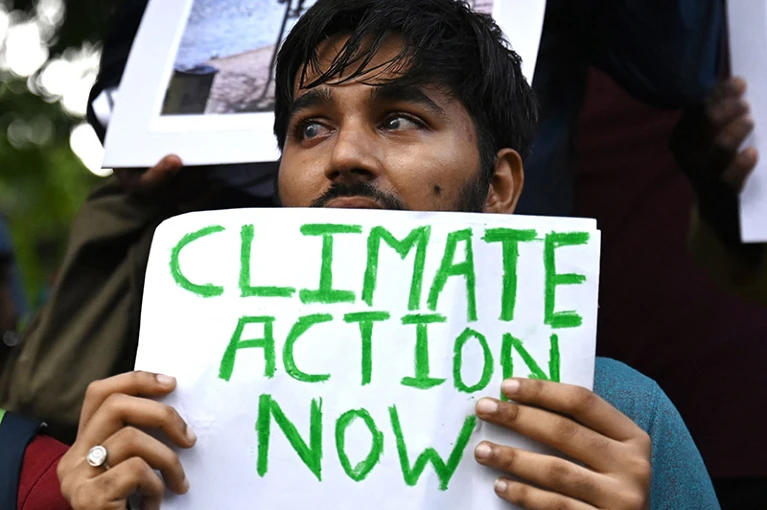The government of India has pledged 350 billion rupees (US$4.25 billion) to aid in the transition of the country’s economy to green energy production in this year’s national budget.
According to climate policy experts, the funding is a welcome first step, but it must be followed by long-term commitments.
India is already facing the brunt of climate change. The first national assessment1 of climate change found that the average temperature rose by around 0.7 °C between 1901 and 2018.
The country experienced an extreme event almost every day in 2022, according to an analysis released in November by the non-governmental organization Centre for Science and Environment in New Delhi, with heavy rains, floods and landslides being the most frequent events.
Indian Prime Minister, Narendra Modi set a goal for his country, the world’s third-largest emitter of greenhouse gases, to achieve net-zero emissions by 2070 in November 2021. Analysts in India praised the target but expressed concern about how the country would achieve the drastic emissions cuts required to meet it.
The budget indicates that India is serious about mitigating climate change, says climate scientist Jayaraman Srinivasan at the Indian Institute of Science, Bengaluru. “But to meet the goal of net zero by 2070, it will take many decades of consistent policy to transition from coal, oil and gas to renewables,” he says.
Read also: Report says Modest tax rates on the global elite could close huge climate finance gap
Presenting the annual budget in the country’s parliament on 1 February, finance minister Nirmala Sitharaman said that the government is implementing programmes to decarbonize many industries, including energy, agriculture and construction.
He said that a total of 19.7 billion rupees has been committed to making India a global hub of production and an exporter of ‘green hydrogen’ — which is produced using renewable energy to break up water into oxygen and hydrogen, rather than made using fossil fuels. The hydrogen can then be used as fuel by other carbon-intensive industries, such as cement and steel production.
The ministry of new and renewable energy is expected to receive 10.22 billion rupees, a 48% increase on last year’s budget. But funding for the ministry of environment, forests and climate change, which oversees crucial programmes on adaptation and mitigation, remains stagnant at around 30 billion rupees in 2022–23.
Tiju Thomas, a materials engineer at the Indian Institute of Technology Madras in Chennai, says that boosting the country’s production of low-emissions hydrogen will require synergy between policymaking, industry and research. “It is the right time for India to up its game in energy transition,” says Thomas.
But the country also needs to increase its energy-storage capacity to take advantage of other forms of renewable energy, such as solar and wind, which are not available all the time, Srinivasan points out.
This story was adapted from Nature.
